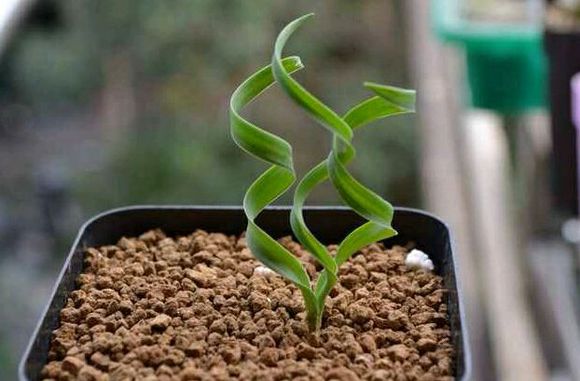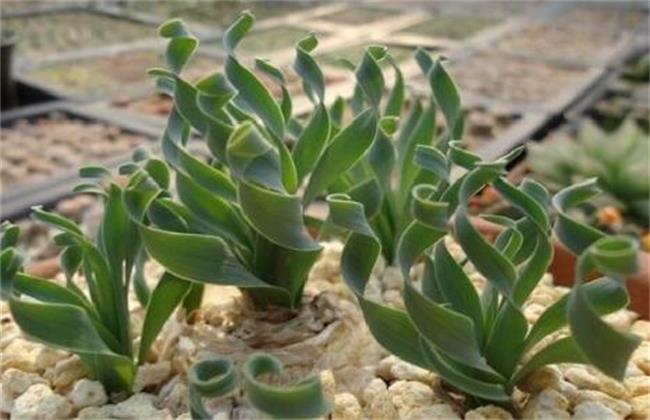The Propagation method of Spring Grass
Sowing and reproduction
The survival rate of spring grass is higher when sowing and propagation, so it is also widely used. We usually choose to breed in autumn, select full seeds, bury them in loose and fertile sandy soil, then cover them with glass and water them to keep the soil and air moist to improve the emergence rate. Note that if you want to avoid flushing seeds or seedlings out of the soil during watering after sowing, we need to use "irrigation" to water the flowerpot in a water basin so that the water slowly soaks the soil from the drain hole at the bottom of the flowerpot.

Ramet propagation
The method of ramet propagation is to choose to break off the small stems sprouting around the spring grass, and pay attention to selecting the ones with good appearance and good growth condition for ramet propagation. When it is gently inserted into the moist and fertile soil, the bulb needs to be exposed to the soil surface of about 1PUB3. Whether it has roots or no roots, the spring grass can survive.
Has everyone learned how to reproduce spring grass? What else do we need to pay attention to when breeding?
The Culture method of Spring Grass
Spring grass likes to grow in places with light, sufficient light can meet the growth needs of spring grass, make it circle and twist, and has high ornamental value. If the light is not enough, the leaves will be thin, curly and unornamental. But in the hot summer, it is necessary to put up a sunshade net to shade, so as not to scorch the leaf tip.
Temperature
Spring grass prefers a shady environment and is afraid of heat. It can grow normally when the temperature is above 10 ℃ in winter, and it can pass the winter safely when it is not less than 5 ℃. In summer, the plant begins to dormancy, the leaves will dry up, can be placed in a ventilated and dry place to spend the summer, after entering the autumn can grow again, normal management can be.
Soil
Spring grass likes to grow in fertile and loose soil and requires rich humus in the soil. Generally, rotten leaf soil or peat soil can be selected and mixed with knowledge and sand to ensure its good drainage, and some bone powder can be added to the soil as base fertilizer.
Watering
It is necessary to keep the soil moist during the growth of spring grass, but there can be no stagnant water at the bottom, because the stagnant water at the bottom will lead to the rot of spring grass bulbs, but we should also be careful not to lack water, otherwise it will lead to stagnation of spring grass plant growth and yellowing of leaves. We can often spray water like the plants of spring grass to ensure high air humidity and timely drainage in the rainy season.
Have you all learned the above breeding methods? What else do we need to pay attention to when breeding?
The Propagation method of Spring Grass
The Propagation method of Spring Grass
Gently break off the small bulbs that sprout around the big bulb of spring grass, and pay attention to select the small bulbs with good appearance and good growth condition to propagate.
Then it can be planted directly and shallowly in the soil, and the bulb will be exposed to the soil surface of about 1GP3 when planting. Whether it has roots or no roots, spring grass can survive.
When we propagate the spring grass, we can combine it with the change of pots in autumn.
Sowing and reproduction
This method is suitable for mass reproduction, and if you want to breed spring grass as a gift to your friends and relatives, then sowing is a good choice.
When autumn comes, the seeds of spring grass are gently buried in the soil and covered with glass sheets to keep the soil and air moist, with a high emergence rate.
After sowing and at the seedling stage, in order to avoid flushing the seeds or seedlings out of the soil during watering, the flowerpot should be watered and the flowerpot should be placed in a water basin to slowly wet the soil from the drainage hole at the bottom of the flowerpot.
Matters needing attention in the reproduction of spring grass light
Spring grass likes light, and sufficient light should be given during the growing period. The leaves of the plants growing in sufficient sunlight are low and stout, twisted and twisted, and have high ornamental value.
Change the basin
Spring grass is generally changed at the end of August every year, the basin soil is required to be fertile and loose, rich in humus, and has good drainage and air permeability.
- Prev

Spring feather culture method
1. Soil spring feathers do not have high requirements for soil. Slightly acidic aerated and drained soil can be used. The simplest one is made of rotten leaf soil or humus soil, peat soil or garden soil mixed with river sand. It is also possible to add base fertilizer before planting, because Chunyu likes fertile soil.
- Next

Culture methods of Spring Grass
Light spring grass likes to grow in places with light, sufficient light can meet the growth needs of spring grass, make it circle and twist, and has high ornamental value. If the light is not enough, the leaves will be thin, curly and unornamental. But in the hot summer,
Related
- Fuxing push coffee new agricultural production and marketing class: lack of small-scale processing plants
- Jujube rice field leisure farm deep ploughing Yilan for five years to create a space for organic food and play
- Nongyu Farm-A trial of organic papaya for brave women with advanced technology
- Four points for attention in the prevention and control of diseases and insect pests of edible fungi
- How to add nutrient solution to Edible Fungi
- Is there any good way to control edible fungus mites?
- Open Inoculation Technology of Edible Fungi
- Is there any clever way to use fertilizer for edible fungus in winter?
- What agents are used to kill the pathogens of edible fungi in the mushroom shed?
- Rapid drying of Edible Fungi

